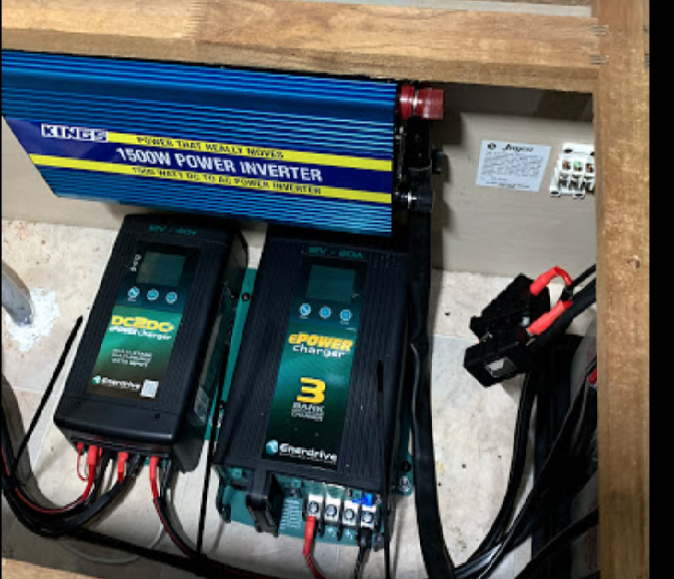Designing a dual battery setup for your vehicle can be a major task. There are lots of options on the market, and figuring out what’s right for your needs is a challenge.
Charging your auxiliary batteries is one of the biggest decisions you’ll need to make. The most effective solution is to use your vehicle’s alternator, but this isn’t always straightforward.
In this article, we’ll see whether you need a DC-DC charger with a smart alternator, and how it affects your dual battery setup.
Using A DC-DC Charger With a Smart Alternator
You need a DC-DC charger if your vehicle has a smart alternator and AGM or Lithium auxiliary batteries. We also recommend installing a DC-DC charger if you are using lead-acid auxiliary batteries, but it’s not crucial.
When your vehicle has a lead-acid starter battery and an AGM or Lithium auxiliary battery, a smart alternator cannot effectively charge your auxiliary batteries.
The reason for this is the difference in battery chemistry. Each battery chemistry (e.g. lead-acid vs AGM vs Lithium) requires a different voltage input for charging.
Lithium and AGM batteries require higher voltages to reach a 100% state of charge, which makes them incompatible with your vehicle’s lead-acid starter battery
Battery Type | Price |
|---|---|
Sealed Lead Acid (SLA) | 14.2V |
AGM | 14.7V |
LiFePO4 (Lithium) | 14.4V |
As you can see, lead-acid, AGM and Lithium batteries all require slightly different voltages during charging. The difference may seem small, but charging at the wrong voltage can damage a battery and significantly reduce its lifespan.
A high quality DC-DC charger will detect the battery chemistry and state of charge, and then provide the current charging current. This ensures your starting battery and auxiliary batteries can be recharged to 100% simultaneously.
That’s good because it means you’ll always have enough power for your vehicle and your campsite. It also extends the lifespan of your batteries – which can be a major win if you’ve invested in Lithium technology.
What is a Smart Alternator?
A smart alternator is a type of vehicle alternator that can vary its output voltage based on operating conditions. Many modern cars and 4WDs are fitted with a smart alternator, as opposed to a fixed alternator.
Like fixed alternators, smart alternators are powered by the engine. As the alternator rotates, it generates an electric current that’s used to charge the vehicle’s starter battery. The amount of current generated depends on the type of alternator:
The advantage of a smart alternator is that they reduce the load on the engine. The less voltage that’s produced, the less strain on the engine. This improves fuel economy and can extend the life of your alternator.
The downside is that smart alternators are specifically designed to recharge your starter batteries. They typically do not measure the state of charge of any secondary batteries, battery chemistry, or the location of batteries relative to the alternator.
This can create problems where smart alternators won’t charge auxiliary batteries.
How Do I Know if I Have a Smart Alternator?
Most vehicles manufactured from 2015 onwards have smart alternators. If you’re unsure, you can check with the manufacturer, or an auto electrician can test the alternator to see whether it provides a fixed or variable output.
What is a DC-DC Charger?
A DC-DC charger is a smart charger that takes the output of your alternator and transforms it to the correct voltage (V) and current (Amps) for charging your auxiliary batteries. You can think of a DC-DC charger as a brain that keeps all your batteries correctly charged.
Without a DC-DC charger, your smart alternator will only measure the state of charge of your starter battery. When the starter battery is at full capacity, a smart alternator decreases its output voltage, which prevents auxiliary batteries from reaching full charge.
Keep Your Dual Battery System Charged With Access Auto Electrics and Air Conditioning!
Installing a dual battery system can be a serious investment. If you need power when you’re camping, touring or spending time off the grid, Access Auto Electrics can help! We design dual battery setups for every situation. Our qualified auto electricians will discuss your requirements and specify products that provide the best balance of performance and budget. We generally recommend installing DC-DC chargers, regardless of the battery technologies you’re using.
A DC-DC charger is the best way to ensure you always have the power you need in a pinch. DC-DC chargers are especially effective when they’re paired with solar panels that can charge your batteries, even when the vehicle is turned off.
Contact us to learn more about dual battery setups. We’ll need to speak with you about your requirements before you bring your car in for an installation.

